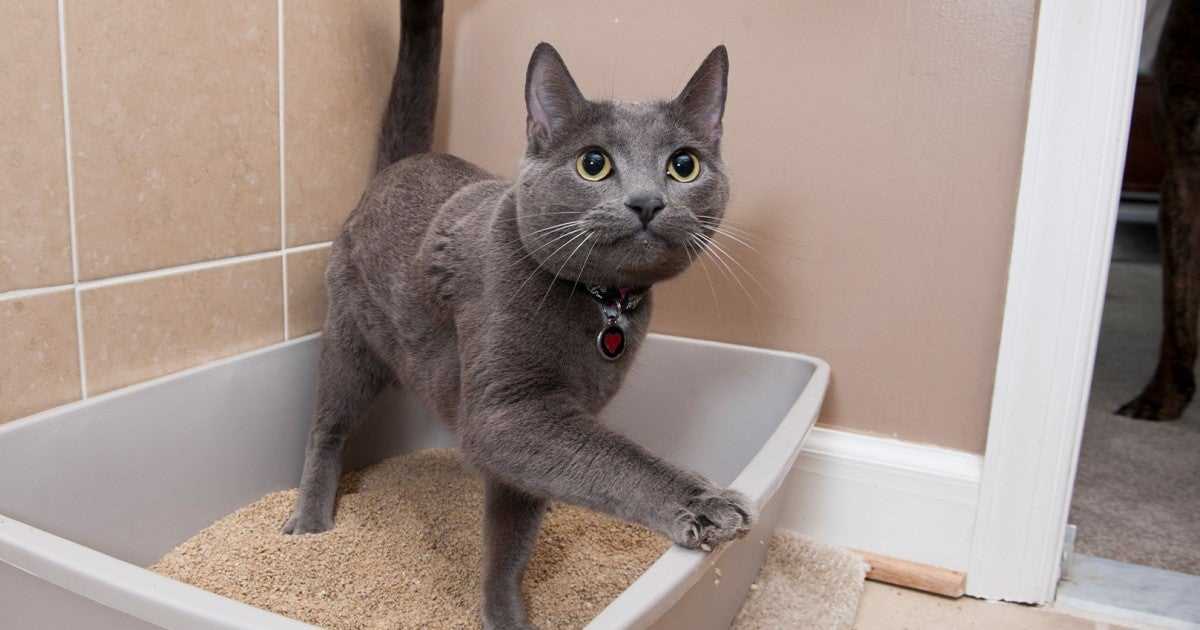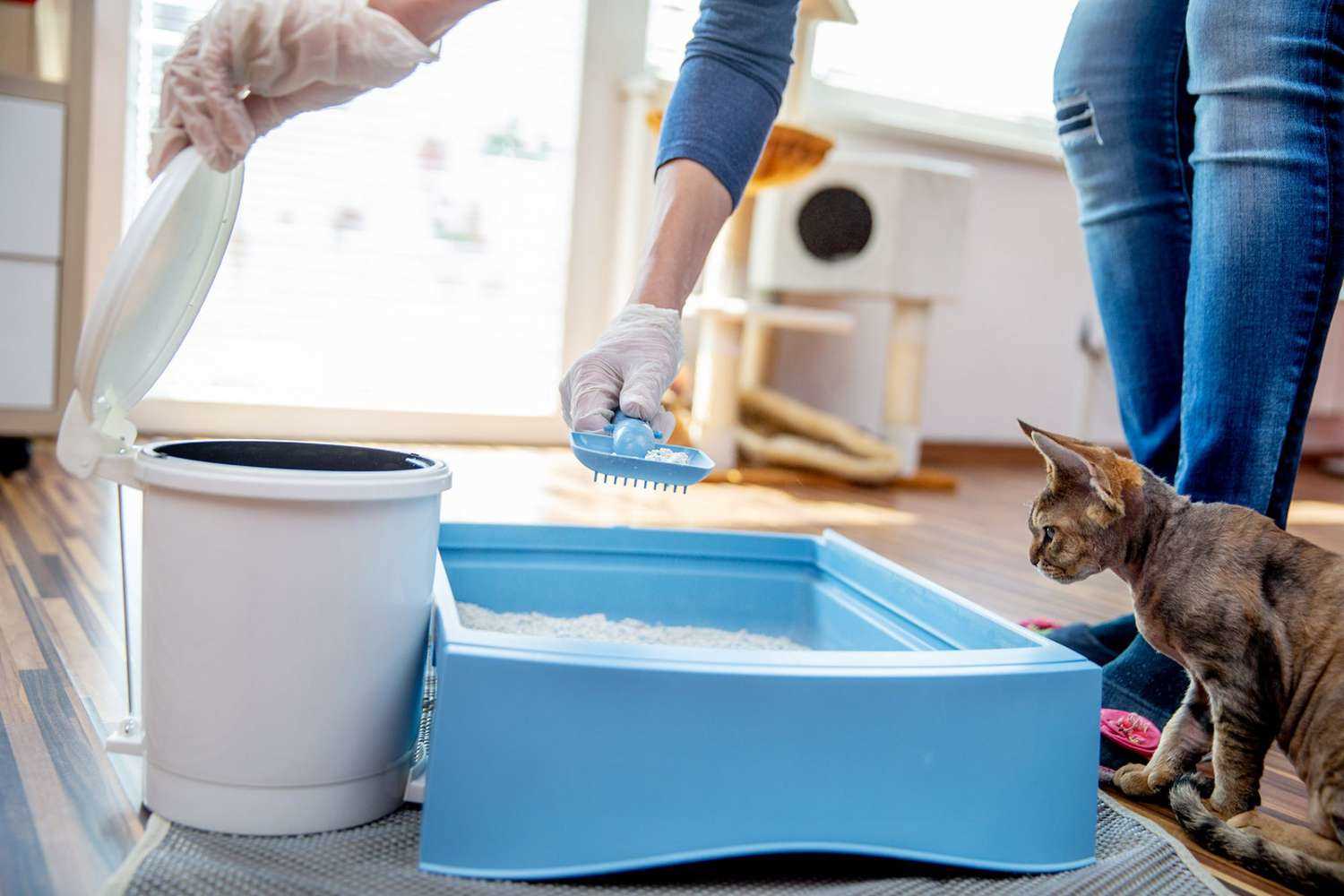



Every day, I make it a point to check my restroom area and tidy up at least once. This is vital for keeping everything fresh and pleasant. I can’t stress enough how important it is for my well-being and comfort.
In addition to daily checks, I recommend a thorough refresh of the whole area every week. It involves emptying out the old substrate, scrubbing the container, and adding fresh material. This routine helps prevent odors and keeps my space inviting.
For those with multiple feline friends, the frequency might need to increase. If there are more than one of us, a twice-daily inspection becomes necessary to maintain cleanliness and hygiene. After all, a happy cat is a clean cat!
How Often Should You Clean Your Cat’s Litter Box

Twice a day is the golden rule. Making it a routine helps maintain a fresh environment. I enjoy a clean spot, and it keeps my paws happy.
Remove clumps and waste after each visit. This prevents odors and keeps the substrate dry. A tidy area encourages me to use it without hesitation.
Once a week, a thorough wash is necessary. Empty the container completely, scrub it with a mild detergent, and rinse well. Ensure everything is dry before adding fresh material.
Pay attention to signs of discomfort. If I refuse to use the space, it might be time to step up the cleaning. Regular maintenance ensures I’m comfortable and healthy.
Consider the type of substrate used. Some options may require more frequent changes. Monitor how much I use and adjust accordingly.
Remember, a clean setup contributes to a happy home for both of us. Keeping it tidy is part of our daily routine that benefits everyone.
Daily Maintenance Routines for Cat Owners
The key to a pleasant environment is daily attention. Spend a few minutes each day to ensure everything is fresh and inviting. Start by inspecting the area where my toilet is located. If any waste is visible, remove it immediately. This will prevent unpleasant odors and keep the space tidy.
Supplies Checklist
| Item | Purpose |
|---|---|
| Waste Scoop | Remove clumps and solid waste |
| Disposable Bags | For waste disposal |
| Fresh Filler | Top up as needed |
| Cleaning Spray | Wipe the surrounding area |
After clearing any waste, check the filler level. If it seems low, add more to ensure comfort. Maintaining a consistent depth helps prevent tracking and keeps the area pleasant. I suggest a minimum of 2-3 inches for optimal coverage.
Routine Maintenance

Wipe down surfaces around the toilet with a gentle cleaner weekly to avoid buildup. This practice keeps everything hygienic and fresh. Regularly check the entire environment for any signs of mess or odor and address them right away. A clean space contributes to a happy, healthy life.
Signs That Your Litter Box Needs Immediate Attention
If there’s an overwhelming odor wafting through the air, it’s time to take action. A persistent smell indicates that waste is accumulating and needs addressing. Regular checks help maintain a pleasant environment.
Notice clumps forming that are larger than usual? This signals excessive waste buildup. It’s crucial to remove these promptly to prevent further mess and discomfort.
Observing my human’s reluctance to approach my bathroom area? That’s a red flag. If they grimace or hesitate, it suggests that cleanliness is not up to par. They should be able to maintain a tidy space for me without hesitation.
When I start avoiding the area where I’m supposed to relieve myself, it’s a clear sign that something is off. This behavior often stems from an unkempt space. I prefer a fresh and welcoming spot for my business.
Finding litter scattered outside the designated area indicates that my human might not be keeping up with regular upkeep. A well-maintained environment minimizes mess and promotes good habits.
If my human notices a change in my behavior, such as increased anxiety or reluctance to use the area, it’s time for immediate action. My comfort and well-being are paramount.
Lastly, if my human sees signs of health issues, like unusual waste consistency or color, they should act swiftly. A clean and healthy environment supports my overall health and happiness.
Impact of Cat Health on Cleaning Frequency
Regular maintenance of the waste area is influenced by my health condition. A few factors can change how frequently this space requires attention.
- Age: Older felines may have more frequent bathroom visits. Keeping the area tidy becomes essential to prevent discomfort.
- Diet: A high-fiber diet can lead to larger and more frequent deposits. Adjusting cleaning routines to accommodate these changes is necessary.
- Health Issues: Conditions such as diabetes or kidney disease can alter the frequency of urination. Monitoring my habits becomes vital for spotting potential health concerns.
- Stress Levels: Anxiety or changes in the environment may lead to increased marking behavior. An immediate response in maintenance is crucial to provide comfort.
It’s advisable to observe changes closely and adapt cleaning practices accordingly. Regular check-ups with a veterinarian can also provide insights into how health affects waste habits.
Choosing the Right Litter for Easier Cleanup
Opt for clumping varieties; they simplify the removal process. Clumps form quickly, making it easy to scoop waste without disturbing the rest of the substrate.
Consider silica gel options; they absorb moisture and minimize odors. This type requires less frequent changes compared to traditional materials, as it keeps the area drier.
Natural Alternatives
Explore plant-based litters, like those made from corn or wheat. These are biodegradable and often have less dust, which can be beneficial for respiratory health.
Fragrance Considerations

Avoid overly scented products. While a pleasant aroma seems appealing, strong fragrances can deter some felines from using their designated space.
Test different types to see which one suits the preferences of your furry friend. A litter that appeals to them will make maintenance easier and more efficient.
Tips for Managing Multiple Cats and Their Litter Boxes
For a harmonious home with several feline friends, designate one box per cat, plus one extra. This ensures everyone has access and reduces territorial disputes.
- Choose spacious containers to accommodate multiple kitties comfortably. Larger boxes help minimize mess and allow for natural behaviors.
- Place boxes in various locations around the house. Different areas can prevent overcrowding and give each cat a sense of privacy.
- Utilize high-quality clumping material to make maintenance easier. This type of litter simplifies the removal of waste and keeps the area tidy.
- Incorporate a daily routine for scooping. Designate specific times for upkeep, so it becomes a part of your daily tasks.
- Monitor each cat’s habits. Changes in litter box behavior can signal health issues. Keep an eye out for any signs of discomfort or unusual patterns.
Invest in covered boxes for shy or skittish cats, as they provide privacy and help contain odors. However, be sure to observe if all cats are comfortable with this setup.
Regularly evaluate the condition of each box. If any box starts to accumulate odors or waste, it may be time to refresh the litter or relocate it to a different spot.
Finally, consider using different types of litter for each box to see which your cats prefer. Some may like clay, while others gravitate towards natural options. Finding their preferences can lead to happier litter habits.
Best Practices for Deep Cleaning Your Litter Box
At least once a month, give that area a thorough scrub. Remove all substrate and wash the container with warm, soapy water. A mixture of vinegar and baking soda can help eliminate odors and stains effectively.
Ensure to rinse thoroughly to avoid any soap residue. If considering a pressure washer, make sure to check if soap can be used under pressure to enhance cleaning power.
After drying, add fresh substrate to the clean container. Opt for a material that clumps well and controls odors, making maintenance easier.
For multi-pet households, designate a specific cleaning schedule for each container to prevent cross-contamination. Implementing a routine can keep everything in top shape.
Consider using a protective cover for furniture, like the best sofa protector for cats, to keep your home tidy while managing multiple boxes.
FAQ:
How often should I clean my cat’s litter box?
It’s recommended to clean your cat’s litter box daily. This helps to maintain a hygienic environment for your cat, as cats are naturally clean animals and may avoid using a dirty litter box. Regular cleaning also prevents odors from building up and keeps the area pleasant for both you and your pet. Additionally, a clean litter box can encourage your cat to use it consistently, which is important for their health and wellbeing.
What happens if I don’t clean the litter box frequently enough?
If you neglect to clean the litter box regularly, several issues may arise. Firstly, your cat may refuse to use a dirty box, leading to accidents around the house. This can cause stress for both you and your cat. Secondly, accumulated waste can create unpleasant odors and attract pests, like flies. Over time, the buildup of waste can also lead to health issues for your cat, such as urinary tract infections. Therefore, maintaining a consistent cleaning schedule is beneficial for your cat’s health and your home’s cleanliness.










